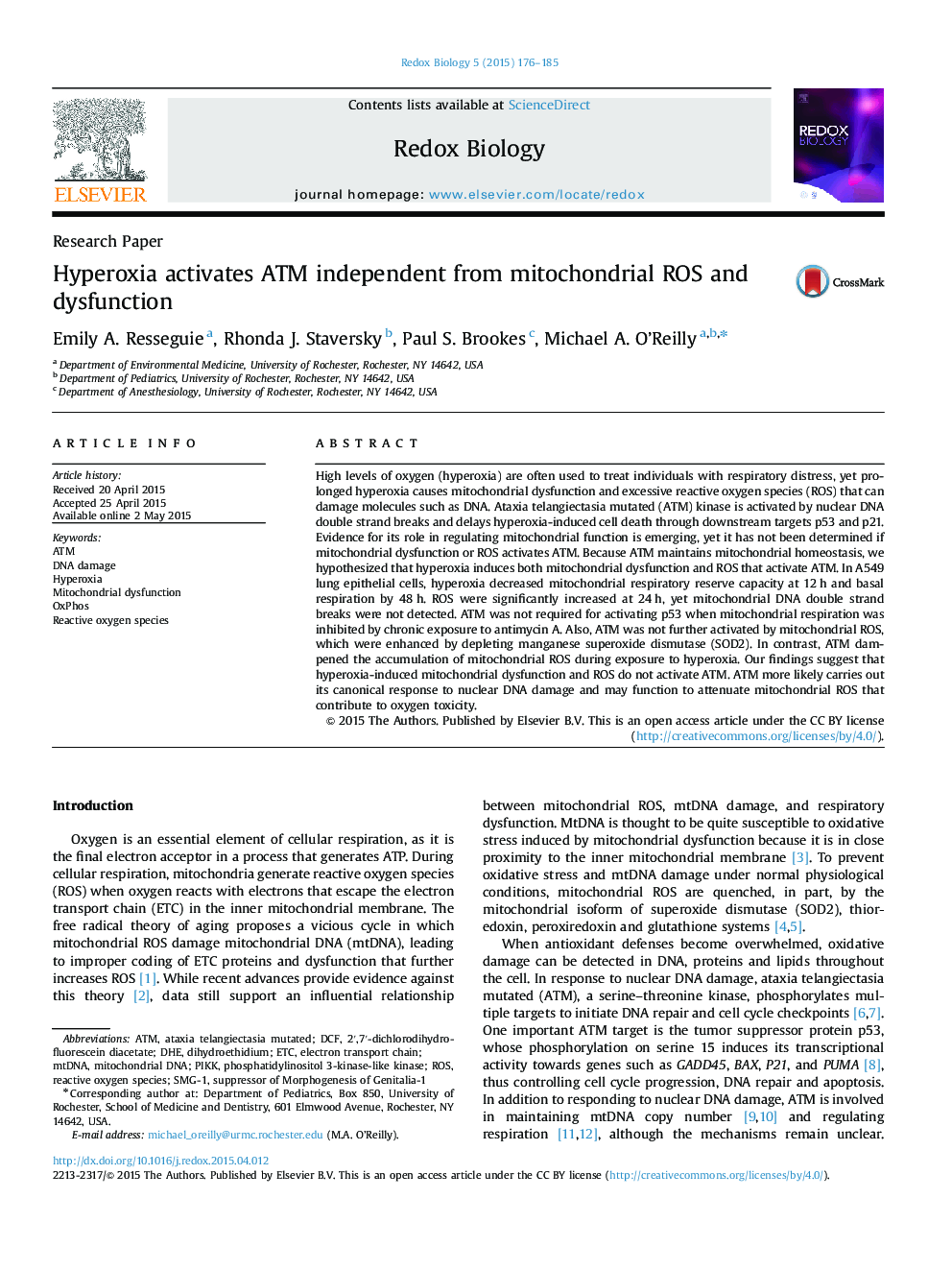| کد مقاله | کد نشریه | سال انتشار | مقاله انگلیسی | نسخه تمام متن |
|---|---|---|---|---|
| 1923154 | 1535845 | 2015 | 10 صفحه PDF | دانلود رایگان |

• Hyperoxia induces mitochondrial ROS and respiratory dysfunction.
• Hyperoxia activates ATM-p53 signaling.
• Mitochondrial ROS and dysfunction do not activate ATM.
• ATM attenuates ROS accumulation during hyperoxia.
High levels of oxygen (hyperoxia) are often used to treat individuals with respiratory distress, yet prolonged hyperoxia causes mitochondrial dysfunction and excessive reactive oxygen species (ROS) that can damage molecules such as DNA. Ataxia telangiectasia mutated (ATM) kinase is activated by nuclear DNA double strand breaks and delays hyperoxia-induced cell death through downstream targets p53 and p21. Evidence for its role in regulating mitochondrial function is emerging, yet it has not been determined if mitochondrial dysfunction or ROS activates ATM. Because ATM maintains mitochondrial homeostasis, we hypothesized that hyperoxia induces both mitochondrial dysfunction and ROS that activate ATM. In A549 lung epithelial cells, hyperoxia decreased mitochondrial respiratory reserve capacity at 12 h and basal respiration by 48 h. ROS were significantly increased at 24 h, yet mitochondrial DNA double strand breaks were not detected. ATM was not required for activating p53 when mitochondrial respiration was inhibited by chronic exposure to antimycin A. Also, ATM was not further activated by mitochondrial ROS, which were enhanced by depleting manganese superoxide dismutase (SOD2). In contrast, ATM dampened the accumulation of mitochondrial ROS during exposure to hyperoxia. Our findings suggest that hyperoxia-induced mitochondrial dysfunction and ROS do not activate ATM. ATM more likely carries out its canonical response to nuclear DNA damage and may function to attenuate mitochondrial ROS that contribute to oxygen toxicity.
Figure optionsDownload as PowerPoint slide
Journal: Redox Biology - Volume 5, August 2015, Pages 176–185